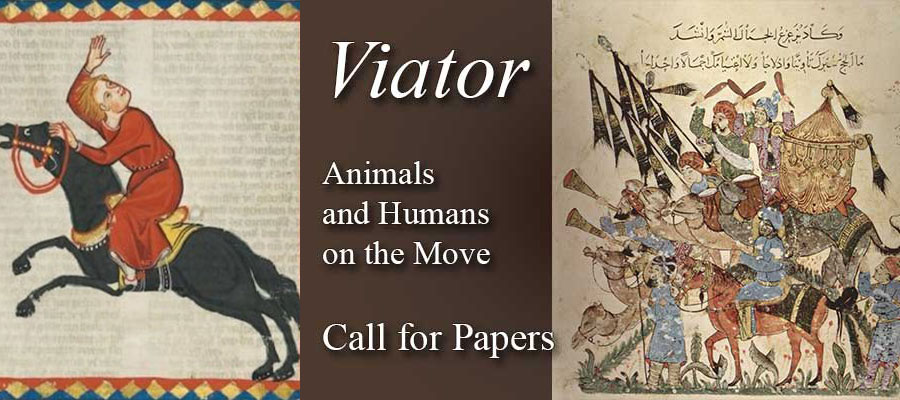Animals and Humans on the Move, Viator essay cluster, edited by Przemysław Marciniak
The relationship between humans and their nonhuman traveling companions changed over time, and over the distances they traveled. Who would Don Quixote be without Rocinante, or Alexander without Bucephalus? This cluster of short essays proposes to look at moving/traveling animals and animals as the companions of traveling/moving humans in the Middle Ages and early modernity. To move or travel might encompass physical travel in its various forms, such as pilgrimage, military campaigns, or travel for commercial or diplomatic reasons, or more conceptual travel across cultures and periods. Contributions might consider texts that describe animals on the move, including ekphrastic works (such as Byzantine hunting ekphrases), an outsider’s (or traveler’s) perspective on autochthonic animals as recorded in travel accounts, or more abstract texts describing travels and adventures of animals.
This cluster aims to offer cross-cultural perspective; papers exploring Byzantine, Arabic, Turkish, Jewish, Persian and other non-Western cultures are particularly welcome.
Possible essay topics include:
- Animals as “companion species” in travel, war, pilgrimage, commerce, or politics
- Traveling menageries, circuses, and animals shows
- Journeys in search of real or imaginary animals
- Ekphrastic texts depicting traveling animals
- The dissemination and reception of texts about animals across languages, cultures, and time periods
Essays should be short, focused interventions (2000–3500 words). Contributions from early-stage scholars are especially welcome, including graduate students, postdocs, independent scholars, and members of the precariat.
Essays to be submitted by January 15, 2021.
